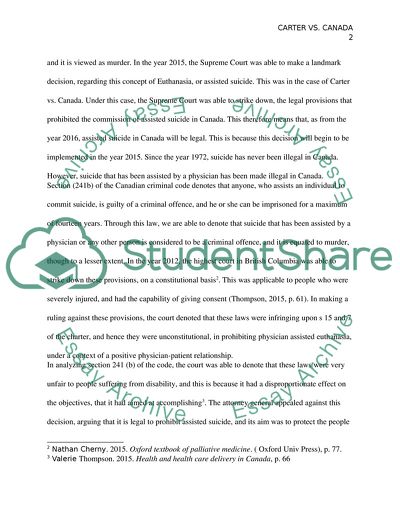Cite this document
(The Case of Carter Versus Canada Report Example | Topics and Well Written Essays - 2000 words, n.d.)
The Case of Carter Versus Canada Report Example | Topics and Well Written Essays - 2000 words. https://studentshare.org/law/1871444-the-supreme-courts-very-recent-decision-in-carter-v-ag-canada-2015
The Case of Carter Versus Canada Report Example | Topics and Well Written Essays - 2000 words. https://studentshare.org/law/1871444-the-supreme-courts-very-recent-decision-in-carter-v-ag-canada-2015
(The Case of Carter Versus Canada Report Example | Topics and Well Written Essays - 2000 Words)
The Case of Carter Versus Canada Report Example | Topics and Well Written Essays - 2000 Words. https://studentshare.org/law/1871444-the-supreme-courts-very-recent-decision-in-carter-v-ag-canada-2015.
The Case of Carter Versus Canada Report Example | Topics and Well Written Essays - 2000 Words. https://studentshare.org/law/1871444-the-supreme-courts-very-recent-decision-in-carter-v-ag-canada-2015.
“The Case of Carter Versus Canada Report Example | Topics and Well Written Essays - 2000 Words”. https://studentshare.org/law/1871444-the-supreme-courts-very-recent-decision-in-carter-v-ag-canada-2015.


